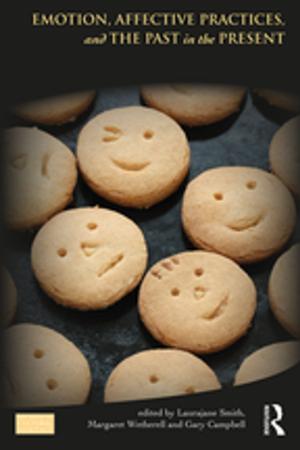The Texture of Treatment
On the Matter of Psychoanalytic Technique
Nonfiction, Health & Well Being, Psychology, Applied Psychology, Psychotherapy, Mental Health| Author: | Herbert J. Schlesinger | ISBN: | 9781134910496 |
| Publisher: | Taylor and Francis | Publication: | May 13, 2013 |
| Imprint: | Routledge | Language: | English |
| Author: | Herbert J. Schlesinger |
| ISBN: | 9781134910496 |
| Publisher: | Taylor and Francis |
| Publication: | May 13, 2013 |
| Imprint: | Routledge |
| Language: | English |
In simple, jargon-free language, Herbert Schlesinger sets out to demystify technique, to show how it is based on basic principles that are applicable both to psychoanalysis and to the psychotherapies that derive from it. He has little need for conventional theory; rather, he reframes essential analytic notions - transference, resistance, interpretation, regression, empathy - as processes and assigns technique the goal of promoting the patient's activity within the treatment situation. The aim of the analytic therapist is to restore to the patient active control of his own life.
Utilizing basic premises of systems theory, Schlesinger approaches personality and neurosis alike as self-stabilizing systems that can be changed only with persistent effort. Follow-up interpretations that address the patient's responses to previous interpretations are crucial. Similarly, the analyst views the transference as "rules of behavior" the patient has created that limit the freedom of both parties in the treatment. Interpretation speaks to the patient's inability to make full use of the freedom the analytic situation affords to explore how his mind works. Viewing neuroses as what the patient does, rather than what he has, the analyst sees the "resisting" patient not as opposing the treatment but rather doing what the patient feels he must do both to accommodate to the demands of the script of an unconscious fantasy and to provide for his own sense of safety.
Beautifully illustrated with clinical vignettes and everyday social experiences, The Texture of Treatment is a lucid and engaging presentation of the principles Schlesinger has taught to successive generations of psychiatric residents, clinical psychology interns, clinical social work students, and psychoanalytic candidates. Taking up elementary matters from an advanced point of view, he has produced a contemporary text whose appeal to seasoned clinicians will be no less that its usefulness to beginning therapists.
In simple, jargon-free language, Herbert Schlesinger sets out to demystify technique, to show how it is based on basic principles that are applicable both to psychoanalysis and to the psychotherapies that derive from it. He has little need for conventional theory; rather, he reframes essential analytic notions - transference, resistance, interpretation, regression, empathy - as processes and assigns technique the goal of promoting the patient's activity within the treatment situation. The aim of the analytic therapist is to restore to the patient active control of his own life.
Utilizing basic premises of systems theory, Schlesinger approaches personality and neurosis alike as self-stabilizing systems that can be changed only with persistent effort. Follow-up interpretations that address the patient's responses to previous interpretations are crucial. Similarly, the analyst views the transference as "rules of behavior" the patient has created that limit the freedom of both parties in the treatment. Interpretation speaks to the patient's inability to make full use of the freedom the analytic situation affords to explore how his mind works. Viewing neuroses as what the patient does, rather than what he has, the analyst sees the "resisting" patient not as opposing the treatment but rather doing what the patient feels he must do both to accommodate to the demands of the script of an unconscious fantasy and to provide for his own sense of safety.
Beautifully illustrated with clinical vignettes and everyday social experiences, The Texture of Treatment is a lucid and engaging presentation of the principles Schlesinger has taught to successive generations of psychiatric residents, clinical psychology interns, clinical social work students, and psychoanalytic candidates. Taking up elementary matters from an advanced point of view, he has produced a contemporary text whose appeal to seasoned clinicians will be no less that its usefulness to beginning therapists.















